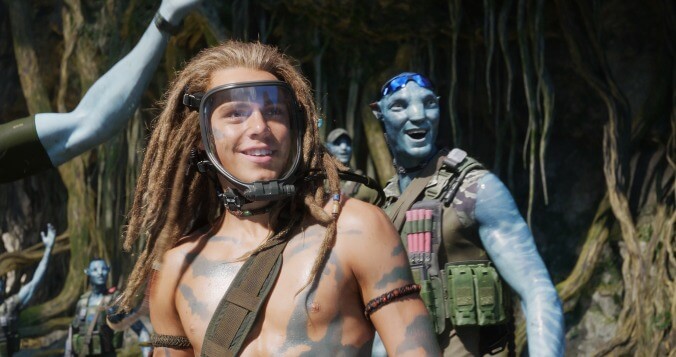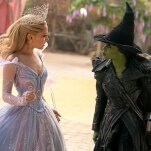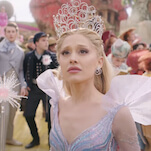How Avatar: The Way Of Water sets up James Cameron's next sequel
A look at sacred seeds, parentage issues, a dying Earth, and who figures to have a bigger role when another Avatar installment arrives

Avatar: The Way Of Water casually drops a pretty big bombshell during its first hour, and James Cameron never really comes back to it, despite the fact that it may be the defining fact behind the entire franchise narrative:
“Earth is dying.” That comes straight from General Frances Ardmore (Edie Falco), as she brings in new troops from Earth to Pandora and proceeds to burn down a massive chunk of the rainforest in order to build settlements. This makes the conflict between humans and Pandora’s native Na’vi existential—humans can’t breathe the atmosphere as is, for one thing. If this is their only hope for survival in the known universe, they’re going to have to terraform, and that will not sit well with either the Na’vi or the planetary consciousness goddess, Eywa.
Yet almost the entirety of The Way Of Water simply focuses on the grudge rematch between Jake Sully (Sam Worthington) and Miles Quaritch (Stephen Lang), the latter now reborn into an avatar Na’vi/human hybrid to even the odds. Quaritch’s mission, in theory, is to kill Sully to stop his raids on human transportation and construction, but once he hits back hard enough to make Jake flee into hiding and abandon the fight, Quaritch continues anyway. Paradoxically, by doing so he ends up convincing Jake that the fight cannot be avoided. But by then the movie’s over, and Jake and Ardmore haven’t even met.
No cliffhanger, but plenty of questions
Unlike many other second installments of franchises with larger arcs—think The Matrix Reloaded or The Empire Strikes Back—The Way Of Water doesn’t end on any major cliffhanger. The battle between the Metkayina clan and their immediate human aggressors is done. Ardmore’s fight to make Pandora into the new Earth, however, is a much bigger arc that seems like it’s only just begun. It’s also one that will have to lead to harder moral choices than whether or not whaling is acceptable on a world where space whales, called Tulkuns, are definitively more intelligent than humans and can communicate with them.
Plus, let’s be real: you don’t cast Edie Falco in your movie and only give her a couple of scenes. With the third film and bits of the fourth already in the can, the odds seem pretty high that she’s got more to do. While we’re on that topic, ditto Jemaine Clement. The Flight Of The Conchords alumnus and Taika Waititi ensemble regular usually gets hired for his ability to be funny, menacing, or both. In The Way Of Water, however, he’s generic. Any competent actor could have stood around saying the lines he’s given, to which he adds neither humor nor hubris. Dr. Ian Garvin is just a marine biologist, who reluctantly assists with Tulkun-killing because it allows him to study aquatic aliens on a planet where most of the humans present are pure profit-seekers. Nobody in their right mind casts Clement to just act normal, which is why he has to have something more to do later on.
But there’s an even bigger plot strand yet to be resolved, and it involves another fact we’re given upfront. Kiri, the teen played by Sigourney Weaver, is somehow the child of Dr. Grace Augustine’s avatar body, presumably born after the real Augustine’s death … or somebody would have mentioned it in the last film. Characters within The Way Of Water offer up an idea that feels like classic slash fiction—the father, they guess, must be Norm Spellman (Joel David Moore), who appears in most of her old video journals, and who also had an avatar body, arguably suitable for mating with hers.






































